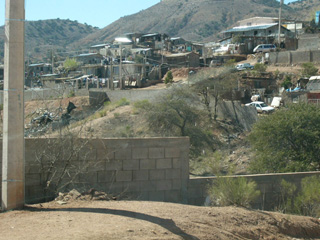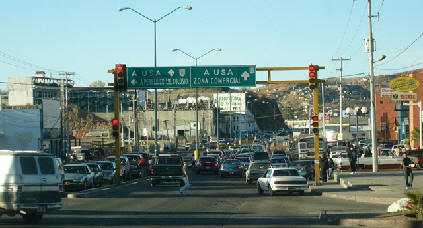Nogales, Mexico

Being a member of a different culture and coming from a
different part of the world has really inspired me to take the immigration
and culture course. I thought that this class would help me learn and
better understand the different cultures we encounter in our every day
life. At the beginning of the semester our professor Dr. Koptiuch told us
that we will be going on a field trip to Mexico. I was really excited to
hear that. I thought that this would be a great opportunity for me to
visit the Mexico for the first time, and also to try to gain a better
understanding of the Mexican culture, people, and why immigration
occurs.
We departed early from the ASU West bus stop on Wednesday mourning to
begin our field trip. Two hours latter we arrived to Tucson where we
stayed at the Border Links’ guesthouse before leaving for the border. I
have lived in the state of Arizona , which shares a border with Mexico,
for the last five years. I always knew that both legal and illegal
immigrants were crossing the border each day, but I never really knew much
about the border issues and conflicts that were taking place at the U.S.-
Mexico border. One of the biggest problems that I have learned about is
the high death rate of the undocumented crossing the border under horrible
conditions in the worst part of the desert. These people are dying not
only from thirst, hunger and heat, but are also being killed by the
vigilantes groups.
Another problem is the hazardous waste management on the
border. The explosive growth of Mexico’s foreign owned assembly plants,
the Maquiladoras, has increased the production of hazardous waste that is
being generated and disposed of in the border area. One study shows that
by 1995 the border’s maquillas were generating an estimated 164 tons of
hazardous waste per day. The improper disposal of chemical waste is very
dangerous and the ones who suffer the most are the people that live in the
border region. This problem has caused the increased rates of hepatitis
and birth defects.
Some of the other problems are the unemployment and low wages
for those who have jobs. As one of the articles shows, NAFTA proves a
nightmare for working class families and the environment. In the US almost
400,000 jobs have been lost since NAFTA. In Mexico, people are working for
low wages, so millions of people have slipped from a working middle class
to poverty. Listening to the Border Links members and Border Patrol
agent, along with all the articles and readings has opened my eyes to
better understanding of border issues and conflicts.

A field
trip to Nogales, Mexico, was a really great experience for me. People
around me have made it even more interesting and educational by asking all
kinds of questions. This has improved my knowledge of Mexican culture and
their way of life. The trip also helped me understand better why immigration occurs and why people risk their
lives by coming over to the US looking for a better job or a better life
for their family.